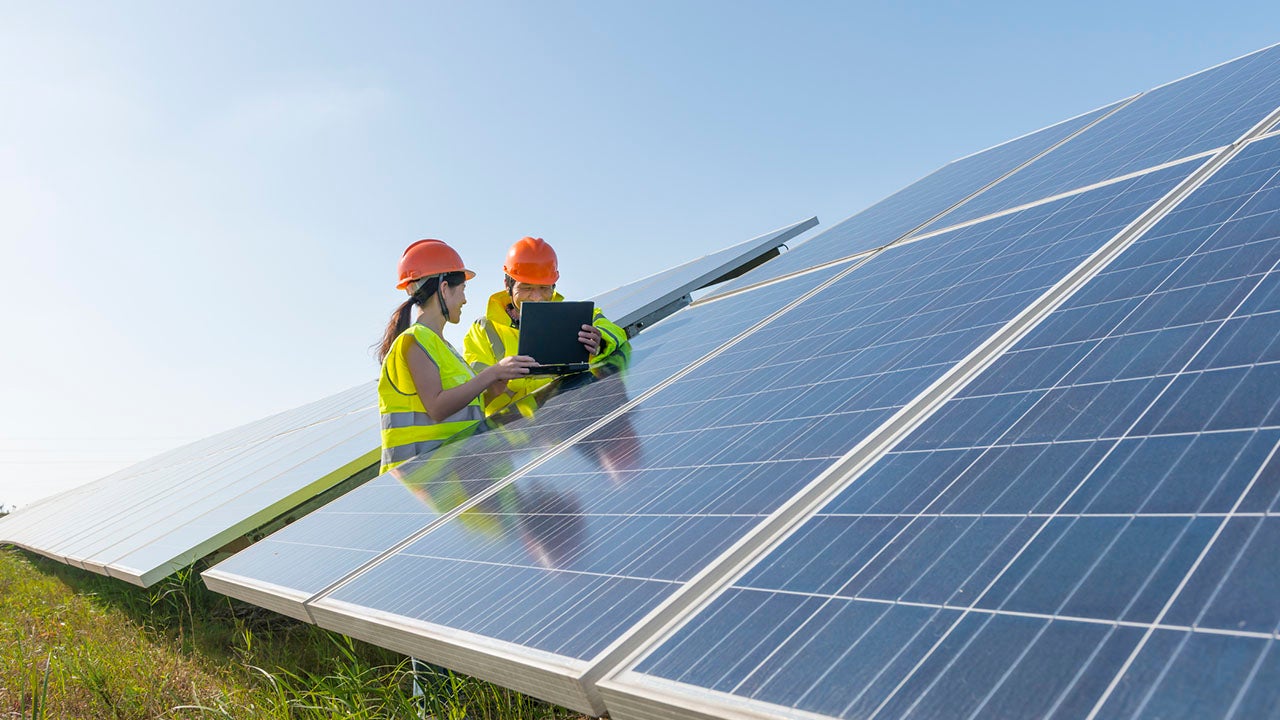Introduced by Representative Alexandria Ocasio Cortez of New York and Senator Edward J. Markey of Massachusetts, the Green New Deal is a proposed resolution that outlines the urgent action required to address the climate crisis. The resolution was presented to Congress in 2019, and while it hasn’t progressed further, its ideas have been incorporated in other proposed bills as legislators have worked to demonstrate how its environmental goals can become opportunities for national economic growth. The most recent of these is the Invest in America Act.
Some of the key goals of the Green New Deal include reaching net-zero emissions before 2050 and investing in the nation’s infrastructure by upgrading existing assets like the grid, roads, and bridges. To achieve this goal the authors propose, for example, upgrading trains to reduce both their emissions and make them more widely accessible. The Green New Deal also outlines its support for programs that capture carbon emissions from the atmosphere.
Although the Green New Deal is not cited in the Invest in America Act, the ideas that it puts forth are drawn from the objectives of the resolution. The act calls for many programs aimed at climate change mitigation, for example, a zero-emissions bus plan which would transition from diesel to electric vehicles. It also proposes investing in renewable fuel charging stations nationwide and modernizing and expanding our national railway to both transport people and freight in and between cities. This bill is a job creator and could help put people who are unemployed because of the Covid-19 pandemic back to work.
This bill is a tangible example of how the United States can build off of the ideas of the Green New Deal and revitalize the economy all while mitigating climate change. Following the Great Depression, similar bills were developed and passed to stimulate the economy such as the Civilian Conservation Corps in 1933 and the Indian Reorganization Act in 1934. Similarly, the Bureau of Public Roads was developed in 1918 but wasn’t fully funded and implemented until the years that followed the depression. Today’s economic downturn caused by the pandemic is comparable to that of the Great Depression. At that time, legislators spent about $11 billion dollars and created 8.5 million jobs through Works Progress Administration. The New Deal was expensive, hard to pass, and was mostly partisan. The Invest in America Act, and similar pieces of legislation, might be the same: expensive, partisan, and hard to pass. However, this does not make it impossible and it is even more critical today to not only revitalize the economy but to do so in a way that mitigates the climate crisis.
There are many individuals who oppose the Invest in America Act. They argue that the costs are too great and that the environment should not be the focus of an infrastructure bill. However, just as the New Deal helped grow the economy and created stronger infrastructure, this bill can begin to do the same.
As American legislators look to find the right way to come back from the economic downturn caused by the pandemic, it is critical that they look to the past. Using the New Deal as a historical template for legislation that can revitalize the economy and the proposed action put forth by the Green New Deal, legislators can make significant progress in both boosting the economy and advancing environmental goals. Although the authors of the Green New Deal have not seen the growth that they wished to see back in 2019, the Invest in America Act serves as an example of one way that some pieces could be implemented. The implementation of the proposed legislation would be a significant step in lowering unemployment and growing the economy while also making large strides in environmental policy and greenhouse gas mitigation.
Autumn Holzemer served as a 2020 summer intern for the Energy & Environment Program. She currently studies Political Science and Global Studies at the University of Toledo. This was a research and writing project assigned to Autumn over the course of her internship.
The views and opinions expressed in this blog post do not necessarily represent those of the Energy & Environment Program.


